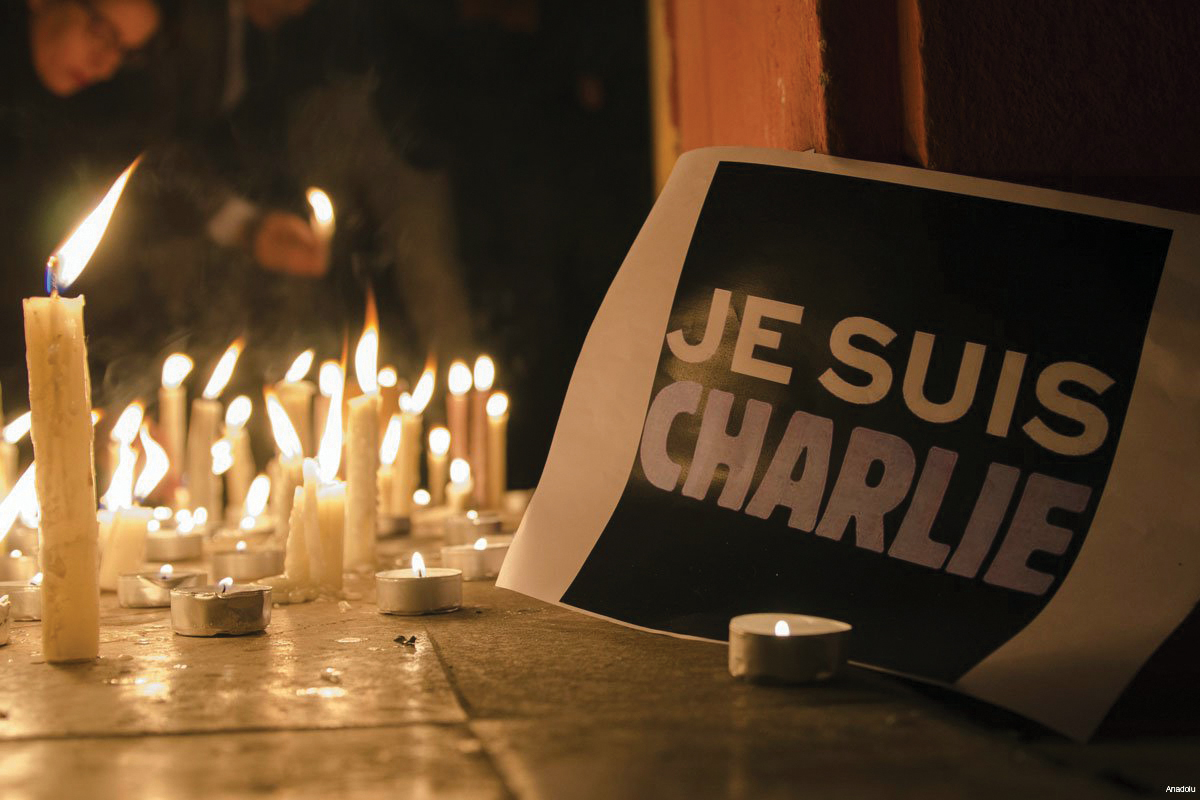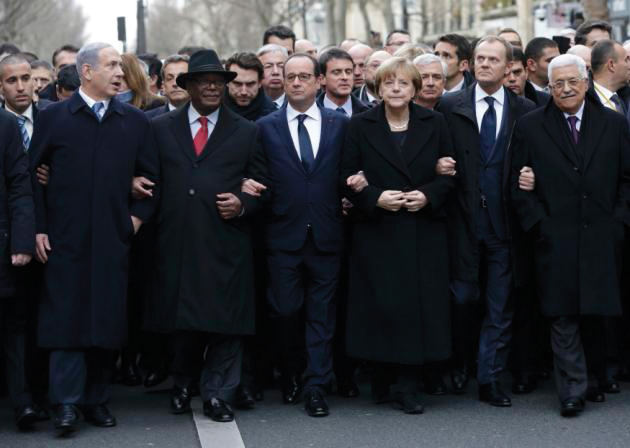Caroline LaRoka had just gotten home from taking her daughter to school when she saw a Facebook post that would devastate her.

“I saw on my Facebook a post of a friend in Paris, where another friend confirmed the death of one of his friends, a designer at Charlie Hebdo.”
The dead man’s name was Bernard Verlhac, better known as Tignous. LaRoka, who lives in Montreal but grew up in France and spent 10 years working for a TV channel there, would soon learn respected peer in media Georges Wolinski was killed in that same attack, which ended the lives of a dozen people.
If the deaths weren’t enough for her to join thousands of “Je Suis Charlie” marchers through downtown Montreal last Sunday, her own beliefs likely would have driven her to it. Attendance estimates for that march range from 10,000 to 25,000, and millions took to the streets worldwide.
“For me, the main and common reason of such people protesting is that whatever a drawer, artist or journalist is reporting, even if judged as [tasteless] by ten or 1,000 people, absolutely nothing can justify to be killed for a publication.”
She said the French are prone to expressing themselves in whatever means they wish, because France has a history of protecting that right above all else and because it’s been proven to work.
LaRoka said the passion in the streets of Paris last week could only be compared to liberation after World War II. She has seen similar protests in her lifetime, but nothing to this scale.
“I used to [see] a lot of national protests and strikes about education reforms, economic monopolies,” she said. “It belongs to and it is typical of the French people to protest; to talk and express a lot, to show his individuality, to want to be the first to [speak his mind], but also to take part in solidarity actions…”
St. Thomas University political science professor Shaun Narine said the marches in France likely have good intentions, but miss the mark on actually unifying people, or garnering acceptance for the unbridled free speech Charlie Hebdo promotes.
“If you don’t address the underlying issues, then you’ve put a band-aide over what is a gaping wound,” he said. “For France, the deeper issues of their Muslim minority have been apparent for some time and the French have just not dealt with it.”


While the professor feels that some of the images published by Charlie Hebdo would have been classified as hate speech in Canada, the vulgarity and diversity of France’s media landscape is something that captures STU student J.E. Sheehy’s attention, and makes him think more about the world’s sensitive issues.
“Are these cartoons nothing more than shock value?” asked the Sherbrooke, Que., native. “I’d argue that this is exactly the goal that the staff at Charlie Hebdo had in mind, which sometimes pushed them to caricature themselves.”
In the weeks after the initial attacks, a number of Sheehy’s classes focused on freedom of expression and journalistic independence.
He said the fact people are talking about this on the other side of the globe, “proves the necessity of having a media outlet who shakes the cage sometimes.”
“This doesn’t change anything to the fact that Charlie Hebdo was provoking and offensive to some, sometimes to a point where their desire to shock clashed with other things that they [try] to do.”
Note: LaRoka’s last name was changed in respect to a request for privacy.
